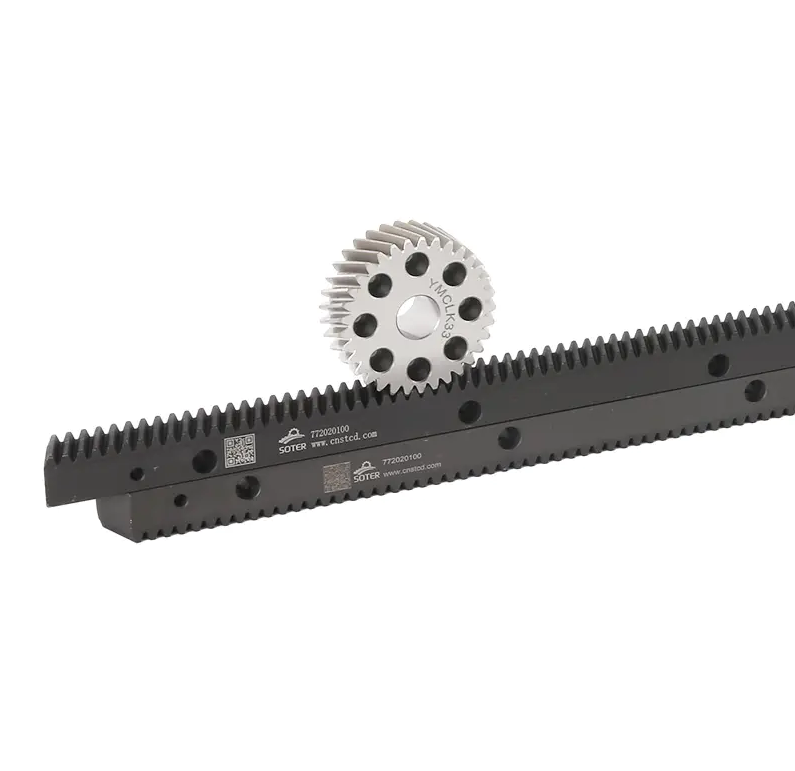In the world of mechanical motion systems, the choice between straight-tooth and angled-tooth gear racks is not just about structural differences—it directly impacts efficiency, smoothness, and long-term system reliability. One significant factor in this decision is transmission efficiency, especially in applications where speed, noise, and mechanical wear must be optimized.
Compared to straight gear racks, the angled-tooth variant, often referred to as a Helical Gear Rack, provides a clear advantage in terms of energy transfer and motion continuity. This advantage stems from the way its teeth are designed and how they engage with the mating pinion.
The primary improvement lies in the gradual engagement of the teeth. Unlike straight gear racks, where a single tooth typically makes contact at one time, the angled version allows multiple teeth to mesh progressively. This multi-point contact leads to a smoother force transmission and reduces the mechanical shock that usually occurs during sudden engagement. The result is less vibration and a more stable movement profile, especially under high loads or rapid directional changes.
Another key reason for the efficiency improvement is load distribution. Angled gear racks distribute operational forces more evenly across the gear face, minimizing localized stress. This not only reduces wear but also enhances power transmission by reducing friction and backlash. Machines equipped with this system often operate more quietly and consume slightly less energy during extended use due to the improved meshing efficiency.
In high-speed applications, transmission efficiency becomes even more critical. Systems using straight-tooth designs may experience increased noise and heat at higher speeds, as the abrupt engagement of teeth can cause micro-slippage or impact loads. Angled gear racks minimize this issue by enabling a more continuous transfer of motion. As a result, energy loss through friction or heat generation is significantly lower, translating to improved overall system efficiency.
Another subtle benefit lies in gear alignment tolerance. While angled racks do require careful axial force management, they also allow for better centering during operation. This leads to more consistent torque delivery and reduces micro-misalignment losses, further contributing to energy-efficient performance.
It’s important to note, however, that the enhanced efficiency of angled gear racks does come with some trade-offs. They are typically more complex to manufacture and may cost slightly more than straight-tooth racks. Additionally, the axial thrust they produce needs to be addressed with proper support bearings. Yet, for systems where precision, quiet operation, and performance consistency matter, these considerations are well justified.
In summary, the angled-tooth rack design stands out for its superior transmission efficiency over traditional straight-tooth systems. Whether in automated production equipment, CNC machinery, or robotics, this design offers tangible benefits in smoothness, energy use, and long-term reliability.
Technical requirement
Quality Grade: DIN 8
Material: S45C
Tooth profile: helical teeth
Right Hand Angle: 19°31'42"
Hardness treatment: high frequency quenching HRC48-52°
Production process: four-sided flat grinding, fine insertion, surface blackening, or phosphating.
